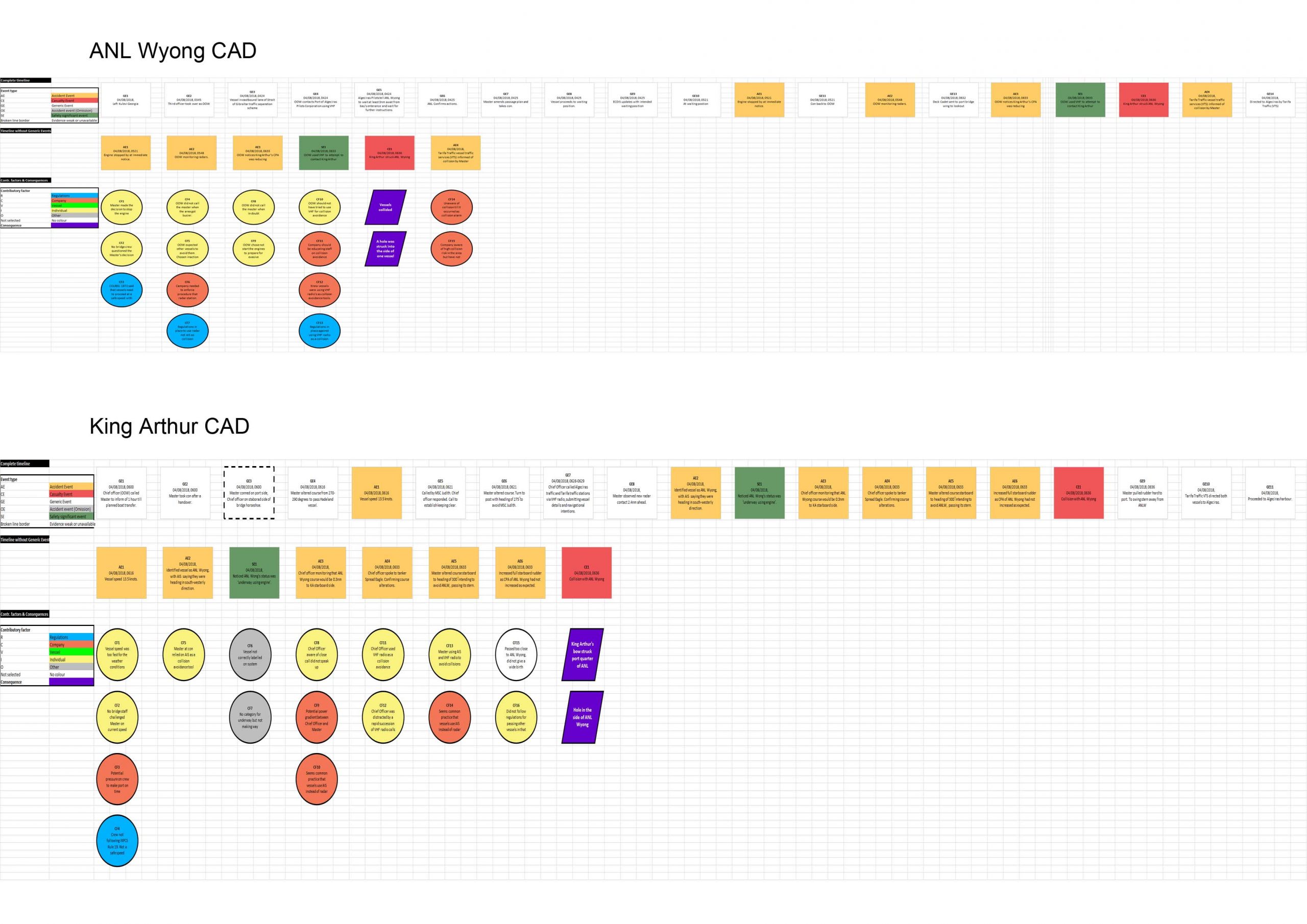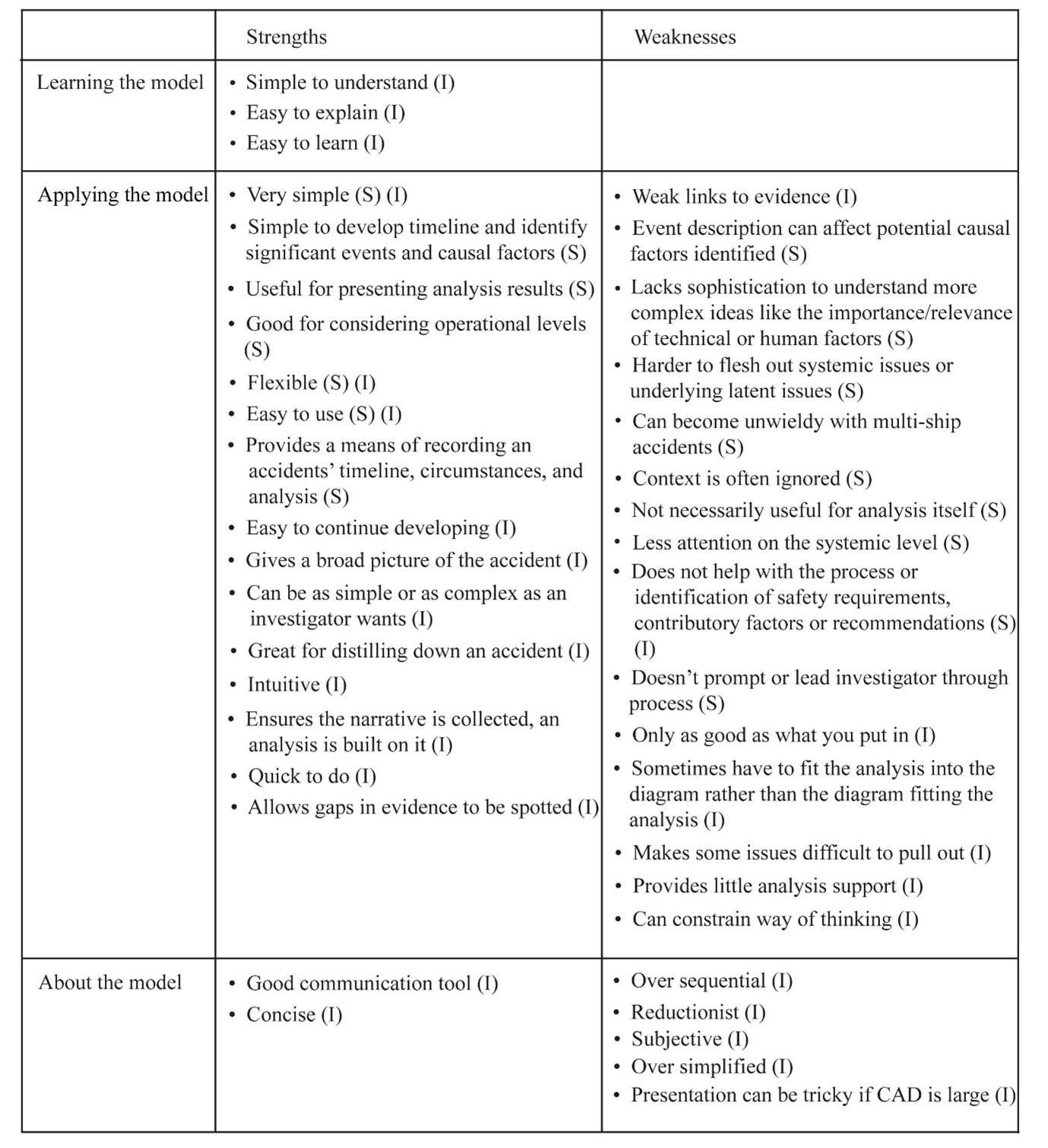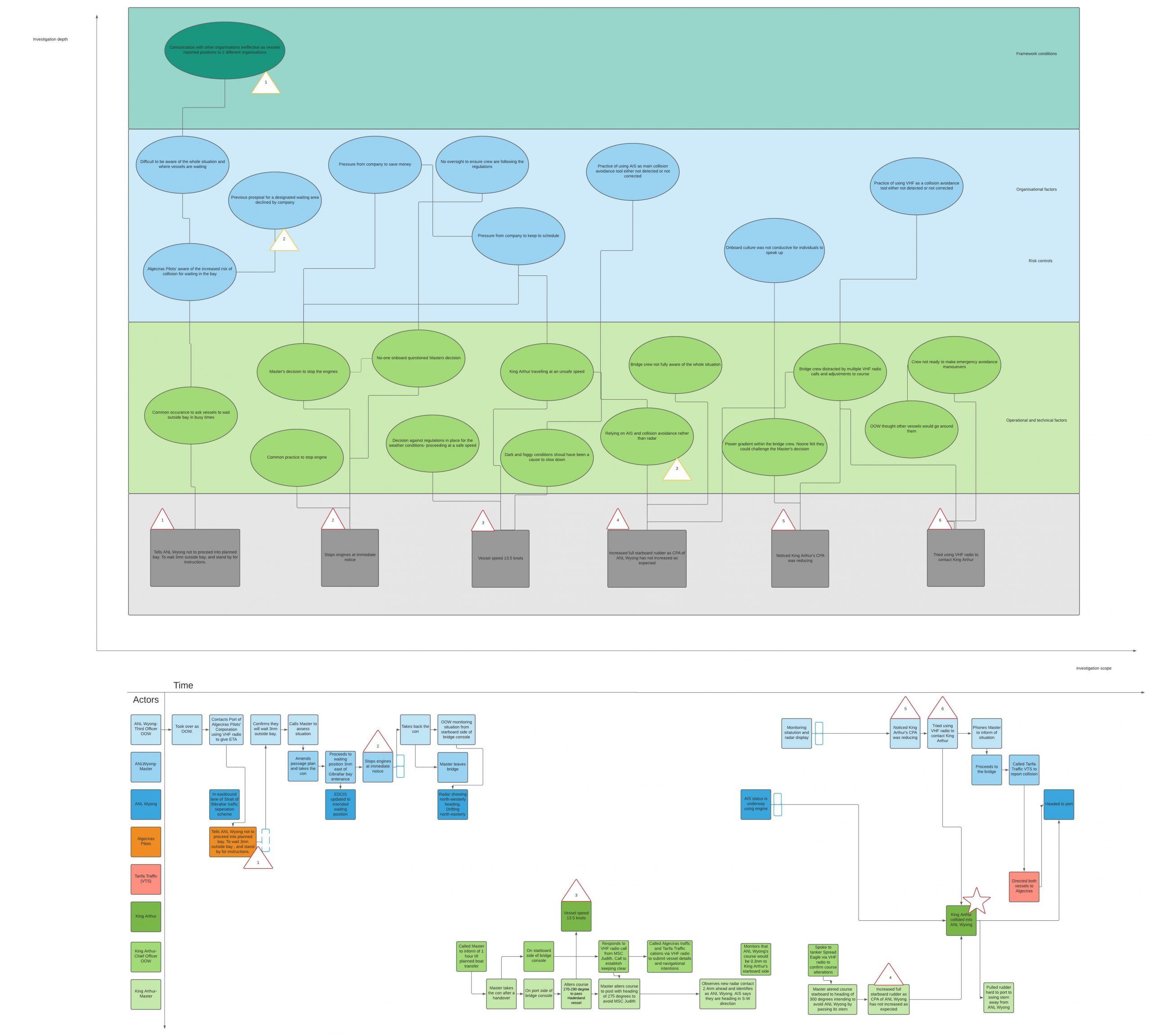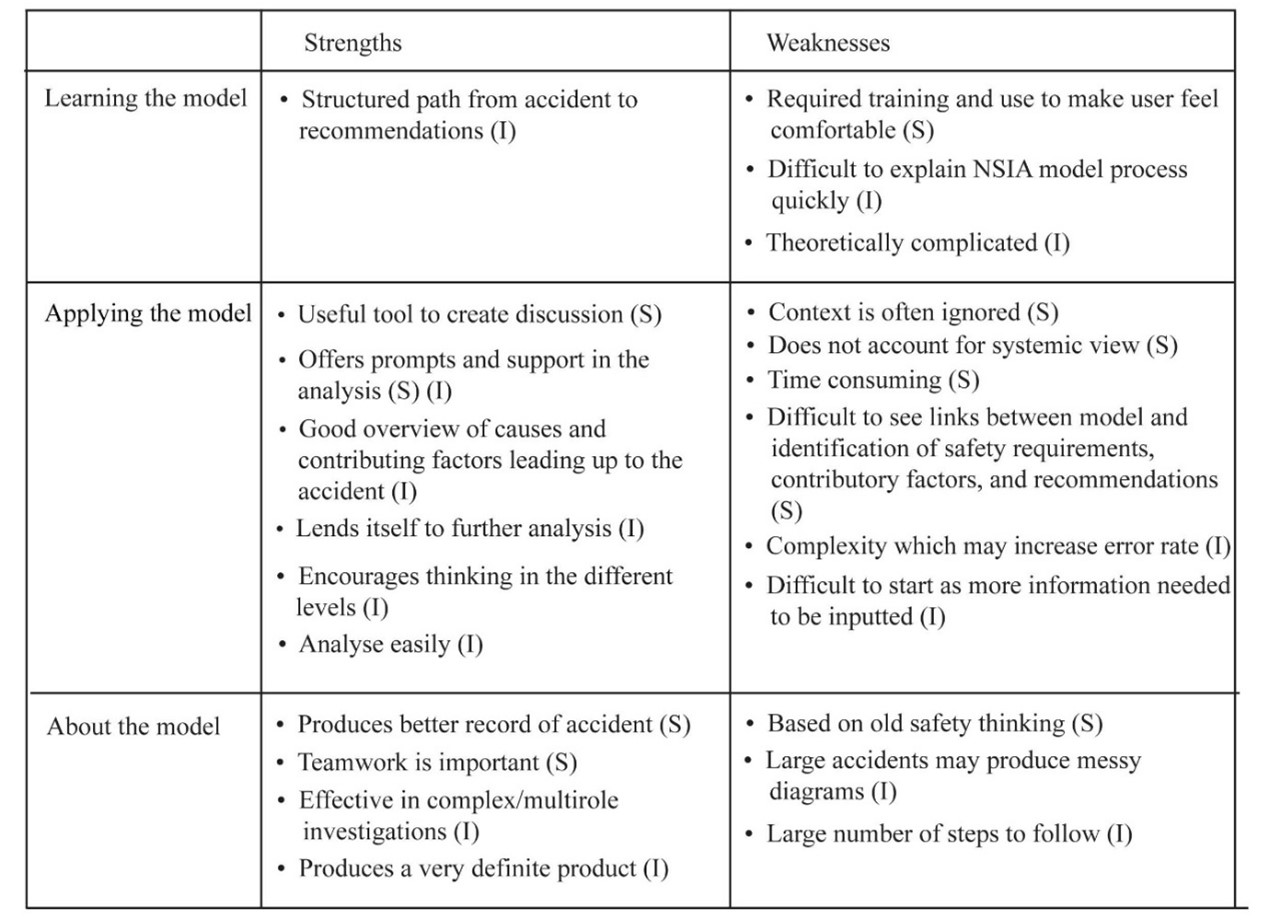Major project
CAD and NSIA: An investigation into the usability of two accident… [Read more]

CAD outputs
This is the CAD output created by the researcher when analysing the case study collision between ANL Wyong and King Arthur.
-Re-education for the crew on the correct usage of AIS and VHF.
-Tarifa traffic to consider an anticollision measure.
-AIS new category

CAD strengths and weaknesses
The image shows the participants thoughts on the strengths and weaknesses of the CAD. Data was collected using both individual interviews and an online survey.

The NSIA model output
The image portrays the output created from analysing the case study collision using the NSIA model. The model was learnt through brief tuition with inspectors of the NSIA who have first-hand experience in developing the model. The model culminated in the following recommendations:
-Improve the communication between onshore agencies in the area.
-Create a designated waiting area for vessels out of the way on incoming/outgoing traffic
-Add an additional channel to AIS to represent vessels underway but not making way.

The NSIA model strengths and weaknesses
The image shows the participants thoughts on the strengths and weaknesses of the NSIA model. Data was collected using both individual interviews and an online survey.
Abbie Palmer
Objectives: The aim of this research was to investigate the usability of two accident investigation models, CAD and the NSIA model. Methods: The researcher used a case study example of the collision between ANL Wyong and King Arthur. Both CAD and the NSIA model were applied to the collision to assess usability. Survey responses (20) were collected from inspectors from both MAIB and NSIA to establish opinions on the models. Whereby 10 individual interviews were conducted to investigate experiences of learning and applying the models. Results: The case study analysis found that the NSIA model required more time to complete than CAD and inspectors agreed with the researcher’s interpretation of the case study accident analysis. Opinions regarding the models were favourable. CAD was reported as more of a tool for communication rather than analysis and the NSIA model was considered as the opposite or both. Participants found CAD easy to learn and simple to use but can be oversimplistic. Participants found the NSIA model to have good depth of analysis and encourages thinking across different levels. Although it requires more time to learn sufficiently and apply in the field. Conclusions: Both CAD and the NSIA models were found to have good levels of usability and participants supported the use of their organisation’s choice of model, but also saw the benefits of the other model. The uneven split of participants from NSIA and MAIB may have affected the presentation of the NSIA model as fewer participants used it as a primary model.
This final project has focused on two unique accident analysis models created by MAIB, Marine Accident Investigation Branch and NSIA, Norwegian Safety Investigation Agency, in order to analyse the causes and contributory factors to accidents, specifically marine. The aim of the research was to investigate aspects of usability of the models from the experiences of inspectors who are using the models. Completing this project has allowed me to have a more in-depth look and experience using real-life accident analysis models in the context that they were designed for, which may be important for my future career. This postgraduate degree has allowed me to continue to build on important skills such as using specialist software such as NVivo and SPSS to analyse sets of data. Numerous modules have been completed this year with favourites including cognitive ergonomics, user interaction and experience and human factors and systems.
Major project
CAD and NSIA: An investigation into the usability of two accident investigation models
Awards
Achieved a 2:1 in BSc in Psychology including a year abroad.